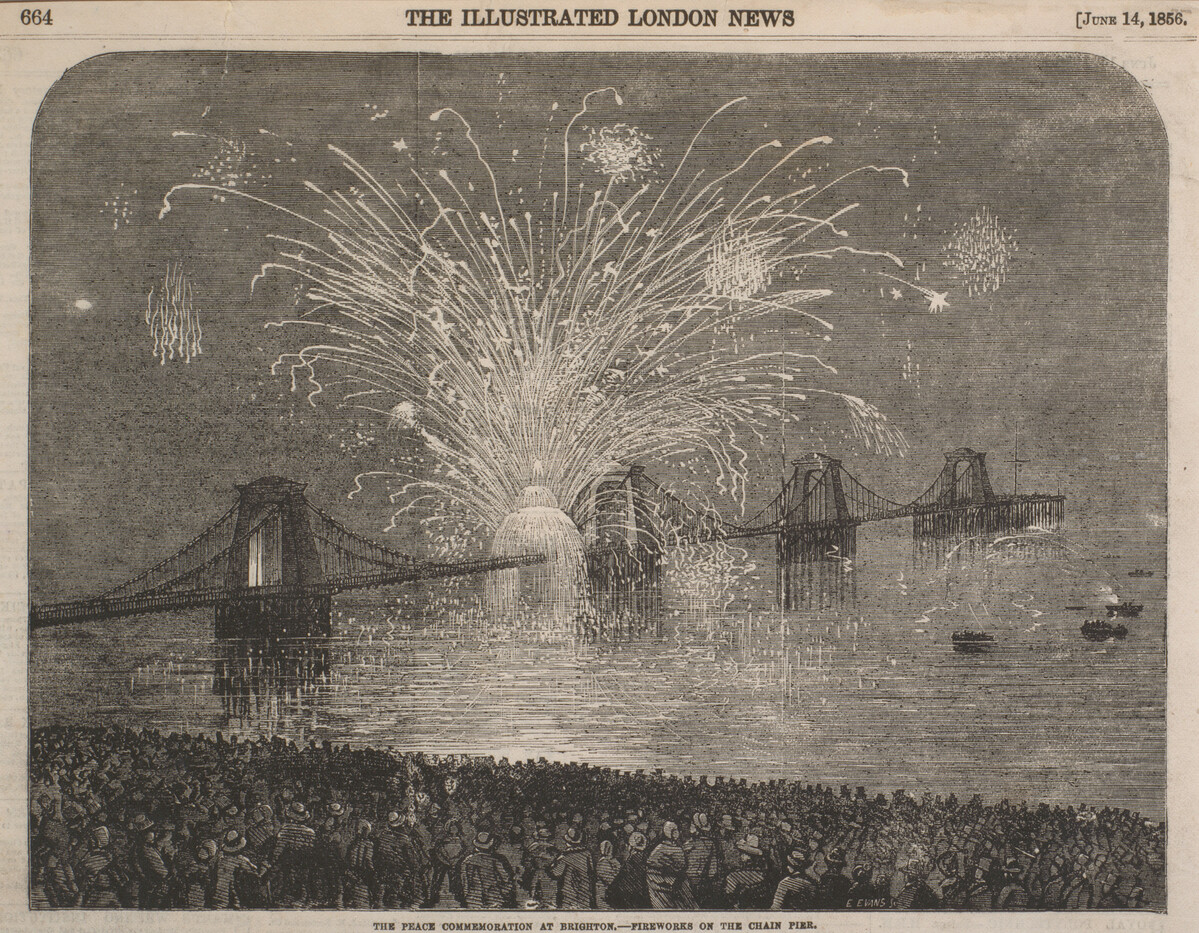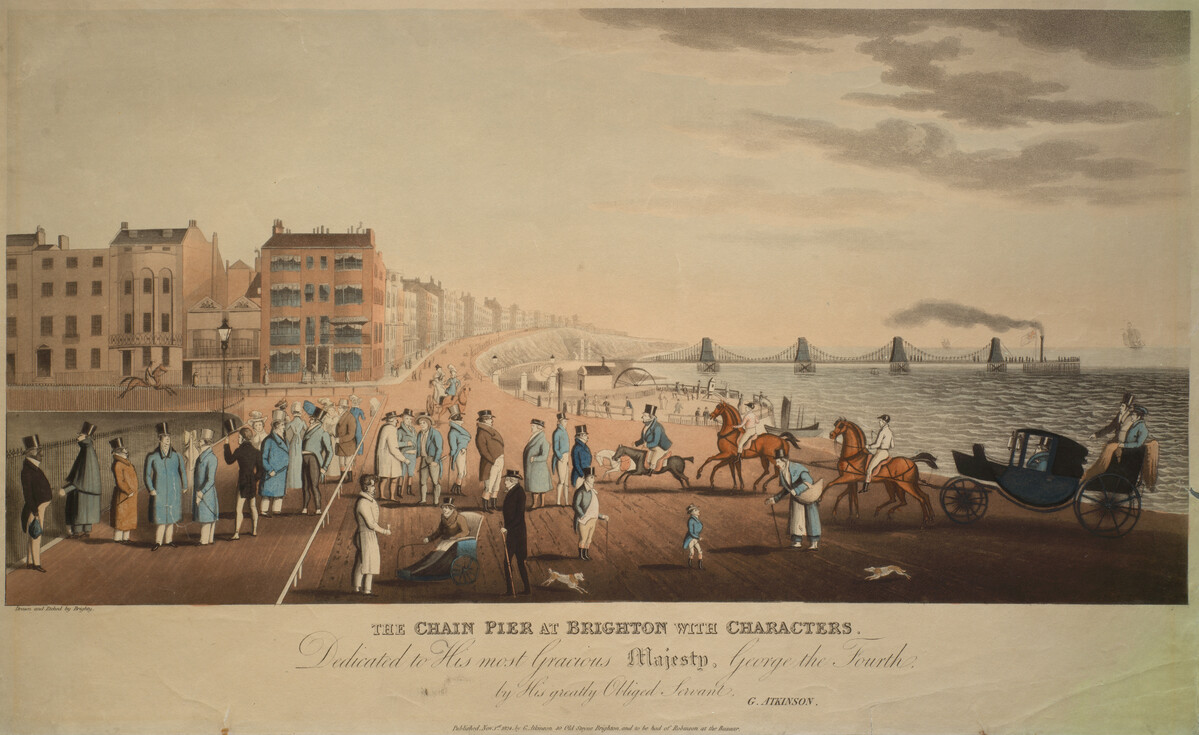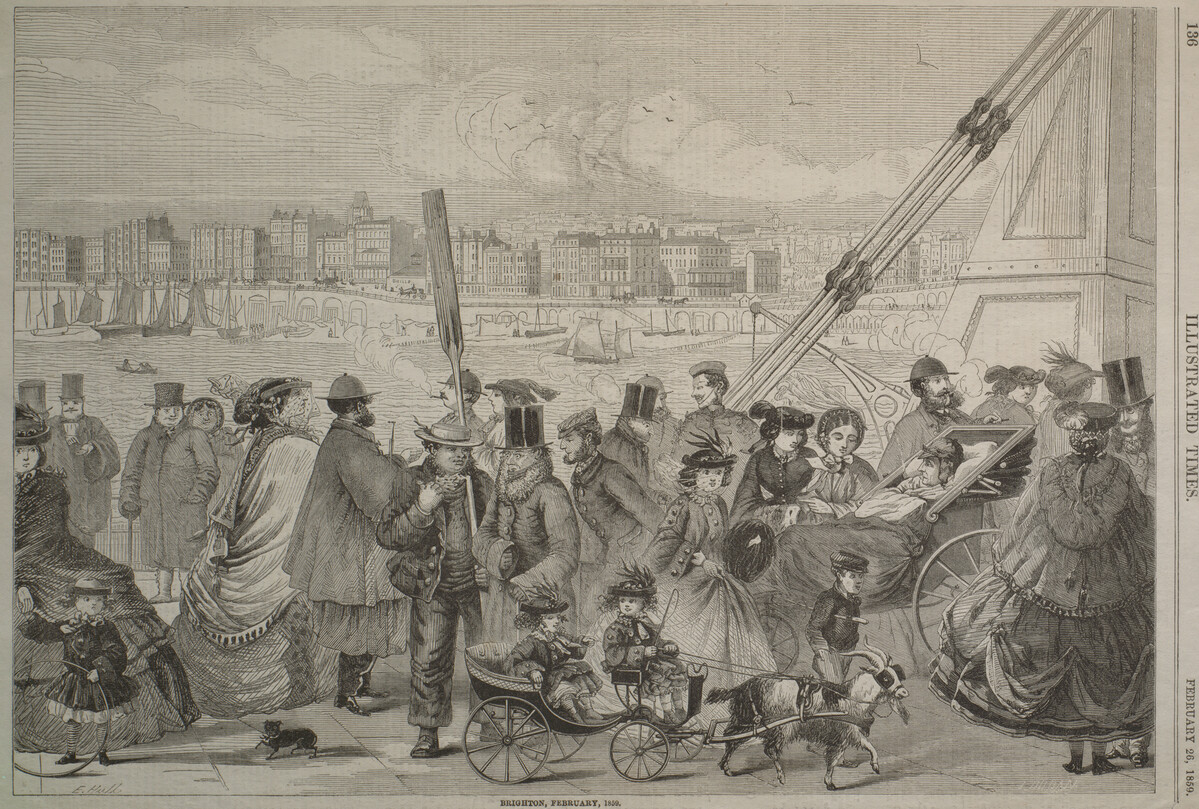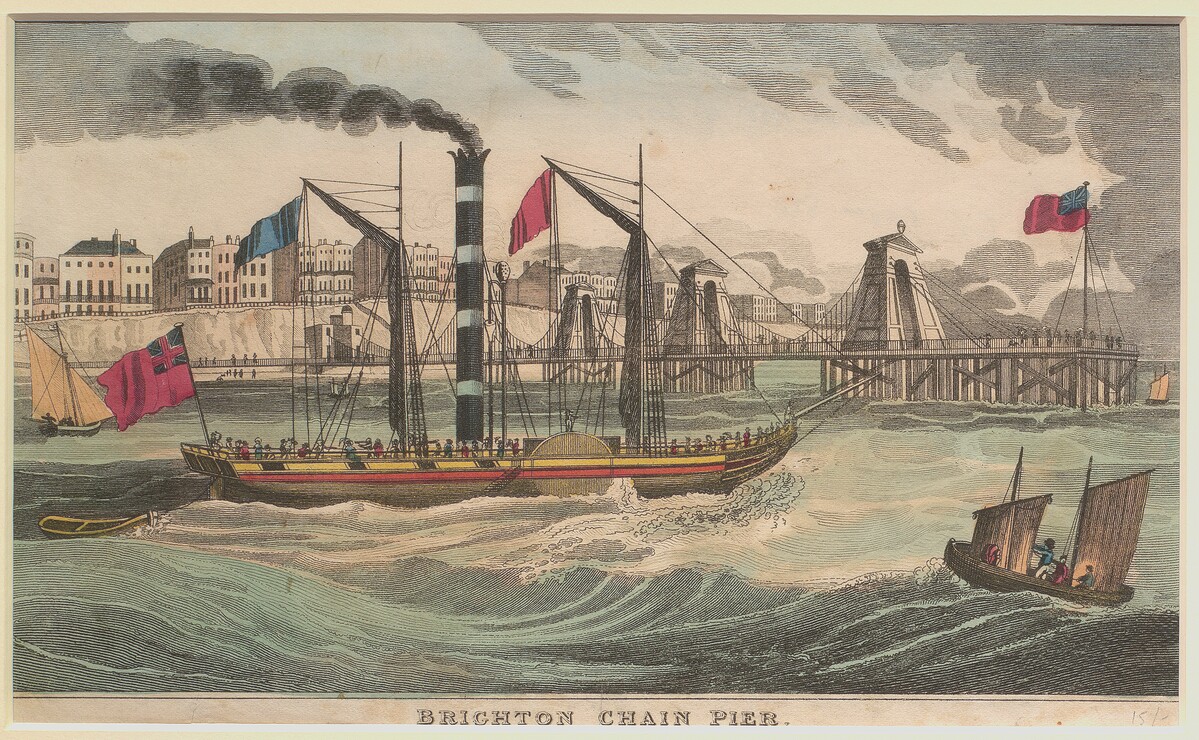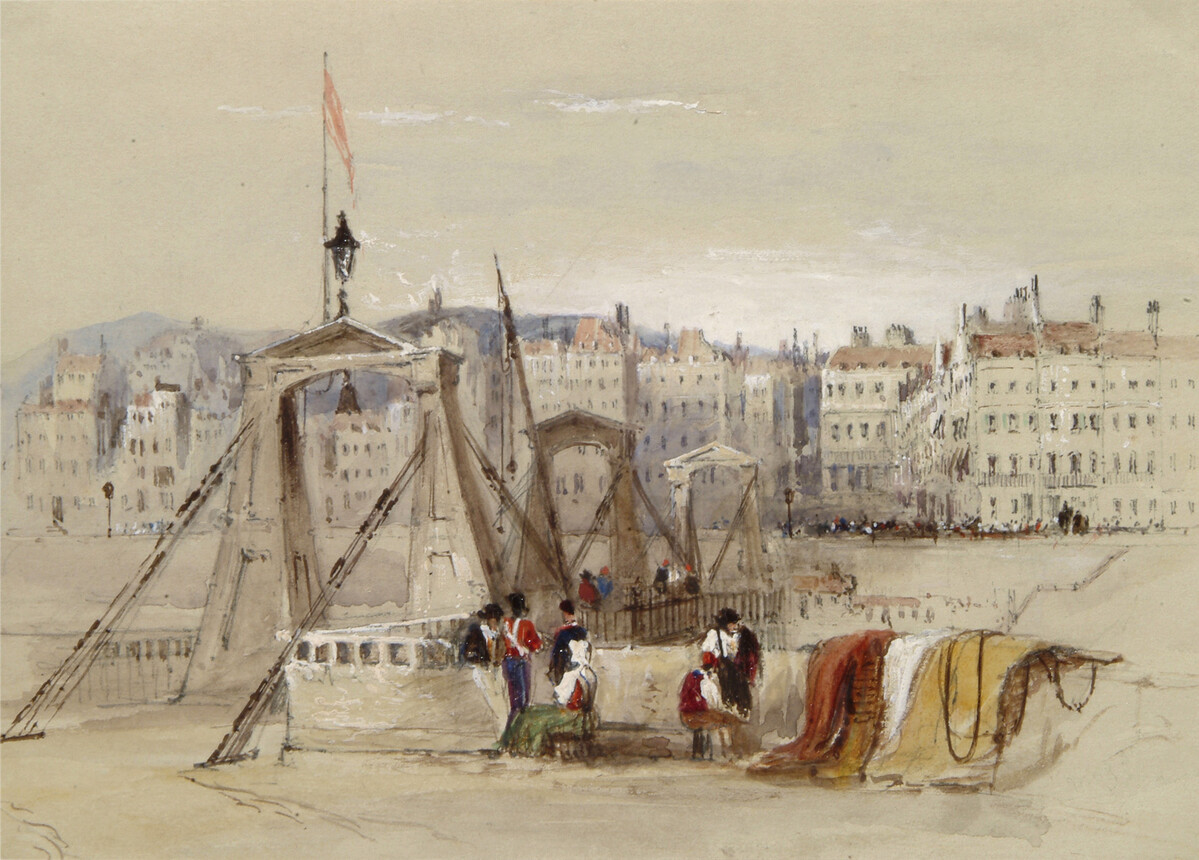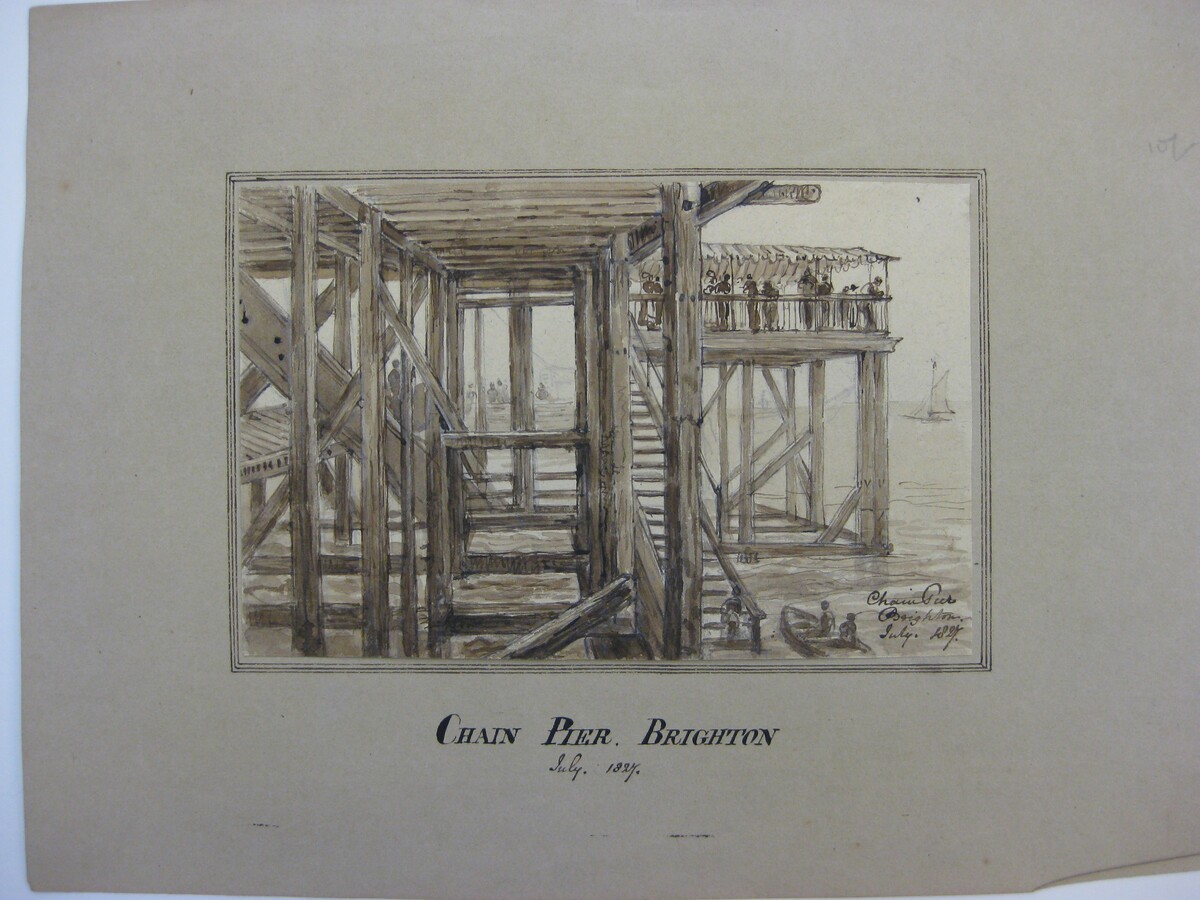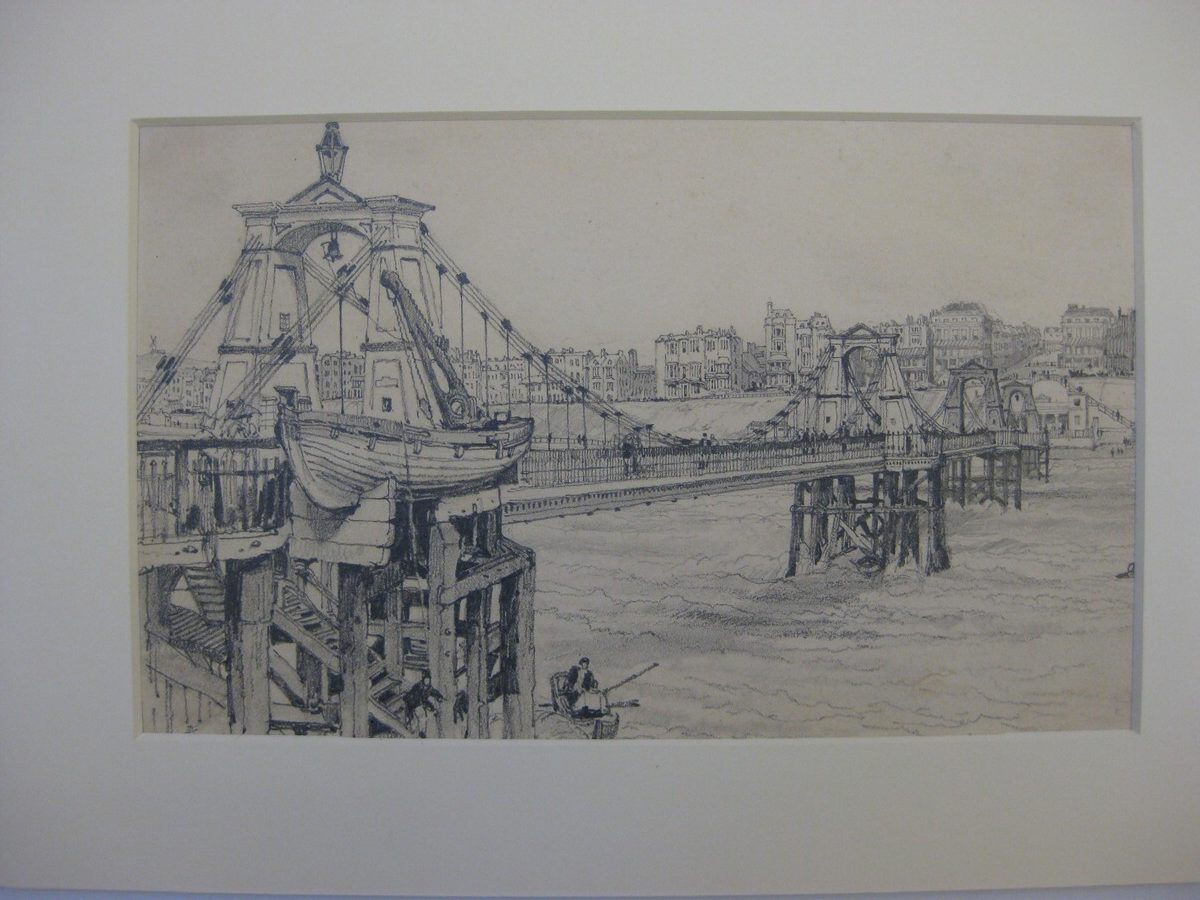World Above the Waves: Brighton’s Chain Pier

A new display World Above the Waves: Brighton’s Chain Pier is currently taking place in Brighton Museum & Art Gallery and continues to 14 January 2024.
Exhibition curator, Lucy Faithful shares how this feat of engineering inspired artists, attracted tourists, hosted entertainments and was a landing stage for cargo and passengers.
The Royal Suspension Chain Pier opened to the public 200 years ago on 25th November 1823. It was one of the earliest piers in the United Kingdom and Brighton’s first,
built during the reign of King George IV in the same year as the completion of the Royal Pavilion.
Situated east of Brighton’s old town, this innovative feat of engineering was a dominant landmark on the local landscape for 73 years. Its popularity, many uses, and attractions changing over time.
Although originally intended as a landing stage for cross-Channel passengers and cargo, the Chain Pier was a multi-purpose site – a ‘world above the waves’.
It not only accommodated travellers but pier company employees, shopkeepers, entertainers, amateur fishermen and fashionable society. It also inspired artists, photographers, poets, composers and writers, until its destruction in 1896.
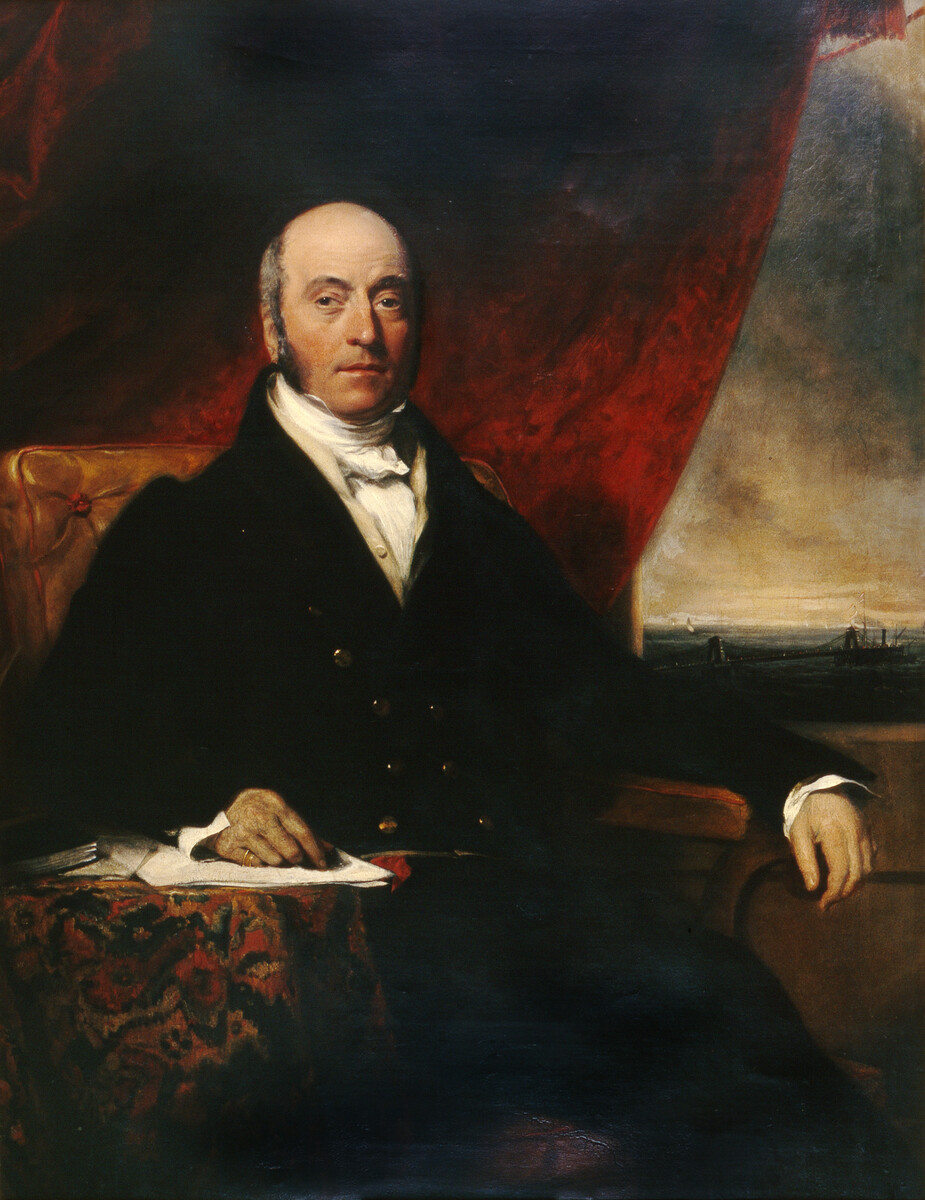
Construction
‘A splendid work of art and science’
In the early 19th century Brighton was a major route for crossing to and from France, with traffic increasing following the Napoleonic Wars.
Prior to the Chain Pier, travellers to the Continent were transported from the beach in small uncomfortable boats (sometimes towing carriages and horses) to larger packet ships on the open sea. Returning voyagers were often carried the last few yards on the backs of beach workers.
The Brightelmston Suspension Pier Company formed in 1821 to provide a safer landing platform for passenger and cargo boats.
Marine engineer Captain Sir Samuel Brown (1776-1852) designed and manage the construction of the pier. He was the renowned inventor of chain cables, chain bridges and suspension piers.
The site chosen was Marine Parade, opposite New Steine. Construction started on 18 September 1822 and it finished a year later, costing £30,000.
The pier was an innovative structure and a dramatic modern addition to the town. Wooden platforms were suspended from eight wrought iron chains. These chains at the front were bolted into the cliff and anchored to large weights on the seabed at the other end. The chains were strung from four colossal cast iron pylon towers. They were modelled on the gateways of Karnak in Egypt. The end of the pier widened into a stone platform.
The grand opening of the pier was held on the 25 November 1823, with a procession, fireworks and music. 30,000 spectators attended, many on the pier itself.

Landing and departure
‘Secure in the tempest – and firm as the rock
May its timbers triumphantly smile as the shock;
Long, long may it proudly rise over the foam, And welcome the sea-beatened traveller home!’
Stairs on the pier led to platforms beneath for landing or embarkation. These were also used by amateur fishermen.
A bell on the pier announced the departure of packet ships to the Continent, while a boat’s arrival was signalled by firing a 61b cannon and raising a flag.
The introduction of steam packet boats in 1816 from Dieppe to Brighton increased cross-channel sailings. Eventually these fast boats crossed the channel three times a week, a mere journey of 9-10 hours. There were day trips along the coast and to the Isle of Wight.

Livelihoods
“Tuppence please!”
The Chain Pier provided employment for local people such as pier masters, lamplighters, watchmen, carpenters, suppliers of entertainments and shopkeepers – often involving people from the same family.
Near the pier entrance there was a library and saloon, which eventually became Snelling’s Bazaar. It sold refreshments, toys, fancy goods and visitors could have their troublesome feet treated by Mrs Snelling the chiropodist.
The great towers on the pier incorporated little kiosks providing, at different periods, refreshments, books, artworks, even shoes, as well as souvenirs such as polished pebbles, decorative china and trinket boxes.
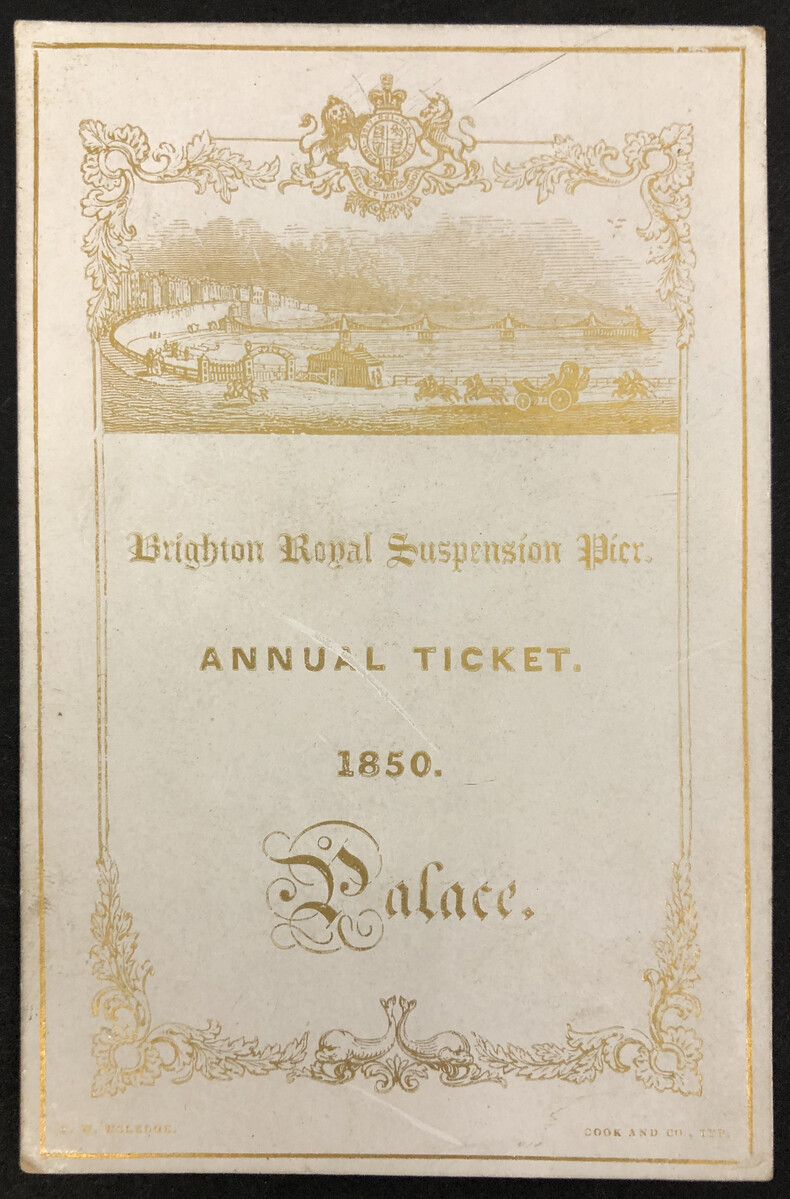
A pier visit
“Every advantage of a sail in one of the pleasure boats without the danger of being sick”.
Despite some initial doubts about sturdiness, the pier quickly became a tourist attraction with 3000 visitors daily at its height (1820s-1830s).
Promenading on the pier was an invigorating experience. The fresh air offered relief from the dusty town and walking neither on land nor sea was a novelty. The pier however offered little protection from the elements and unfortunates were occasionally soaked from high tides.
Attractions on the Chain Pier included exhibitions, musicians and spectacular entertainers. There was a weighing machine and floating baths, suspended underneath the pierhead, for the health conscious.
The pier head was a popular meeting place for fashionable society to promenade or relax on benches. Here there was a telescope, sundial and at one time a camera obscura.
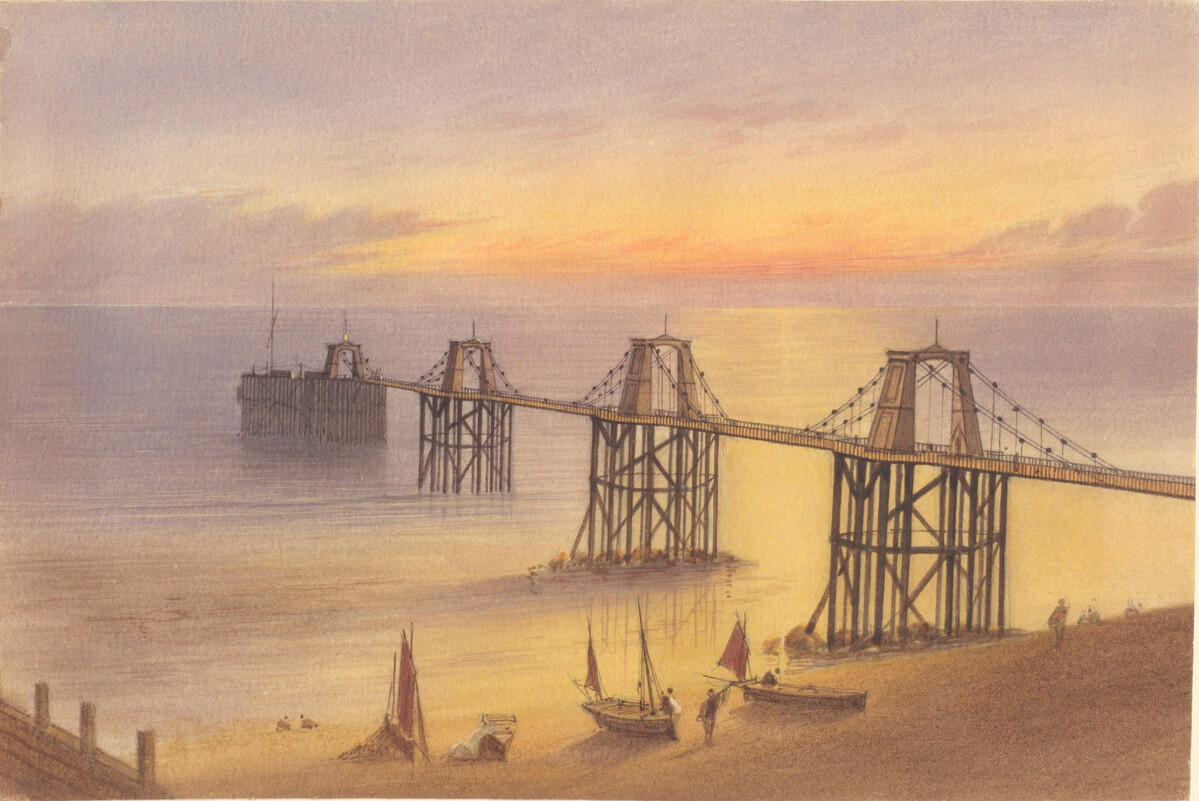
Inspiration
“Hung like a fairy fabric o’er the sea”
The Chain Pier was admired as a remarkable scientific achievement but its aesthetic quality was appreciated too. As a dominating landmark, imposed by man upon the sea, it could be seen for miles and was part of the town’s topography.
The structure inspired writers, photographers, poets, composers, and artists. They drew, engraved and painted the pier from every angle, noting different weather, tidal or light effects. It served as main subject and as background detail in local scenes.
Amateur and professional artists recorded the pier’s daily life, significant events and changes to its form over 73 years. Like its neighbour, the West Pier today, its forlorn form after storm damage served equally as a melancholy muse.
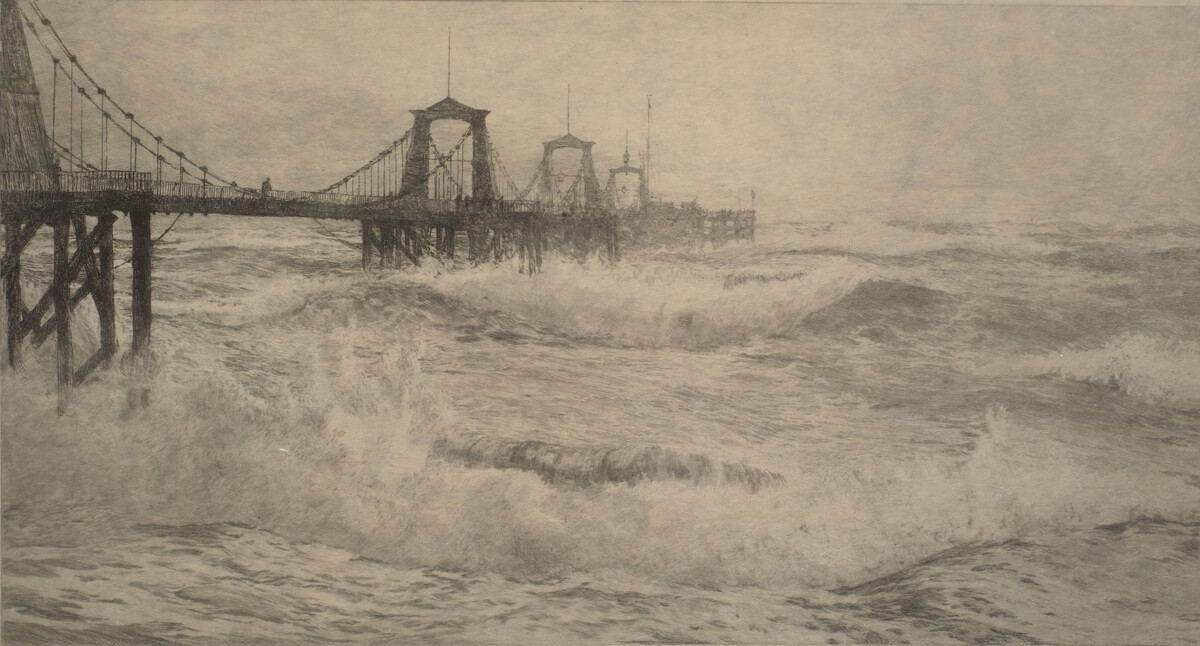
Decline and fall
‘A wey hextonishin vurk, this here pier, wey hexpensive and wery huseless vot old Daddy Boreas vill blow avay sum night in a hurrikin’.
The Chain Pier was battered by several storms during its time, first in 1824 and in 1833 a thunderstorm caused serious damage to the structure. £1,200 was raised for repairs, which showed some affection for the pier.
The pier’s decline began in the 1860s. New attractions such as the West Pier in 1866 and the Aquarium in 1872 offered more amusements. Also, fewer ships had been sailing from Brighton after the railway extended to Newhaven’s more sheltered port in 1847.
Structurally unsound and neglected the Chain Pier closed in 1896. The threat of demolition was pre-empted later in the year when a great storm destroyed the pier on 4 December. An onlooker described it as collapsing ‘like a pack of cards’.
This was the end of the Chain Pier but it is immortalised by the visual representations, souvenirs, wreckage relics and in the few remains of the pier, which can occasionally be seen at low tide.

